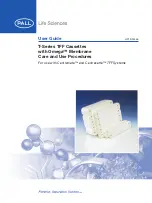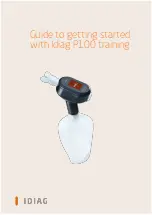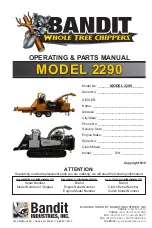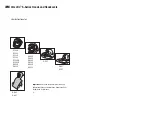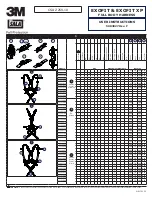
20
Table 5. Prevention and management of potential complications
Complication
Prevention and management
Thrombus formation within the heart, circuit or system components Assess thrombi with TEE for stability; and remove during
surgery or address with appropriate anticoagulation. Delay
weaning, if necessary, until resolved.
Avoid conditions which can cause suction or line chatter. Avoid
flexing the tubing, particularly near the connectors, which can
dislodge fibrin or deposits.
Hemolysis
Troubleshoot to identify cause: cannula position, cannula
selection, CVVH, oxygenator, kinked tubing, another
device, high RPM/flow. Check that pump is mounted
properly. Consider pump change if suspect as a final
option.
Pump not inserted correctly
Mount the pump correctly. Change pump if incorrect
mount is accompanied by platelet consumption &/or
hemolysis.
Console or motor malfunction
Switch pump to backup console and motor. Document,
replace, and report.
Decannulation
Prevent by securing the cannulas to the tissue at multiple
sites following cannulation. Minimize postoperative patient
and circuit movement. Use extreme care when moving the
patient.
Air entrainment and embolism
Immediately clamp pump outlet tubing. Stop pump.
Depending on circumstances and anticoagulation, consider
splicing in a connector, deairing, and/or pump exchange.
Alarms/Alerts and Troubleshooting
For information on alarms and alerts, refer to the CentriMag Circulatory Support System Operation Manual.
Weaning and Explantation
Recovery sufficient for removal from CentriMag system support will depend on specific patient hemodynamic status. Depending on
the extent of myocardial injury:
Patients may recover sufficiently to be weaned within 48 to 72 hours.
Patients may require support for multiple weeks.
Patients may not recover sufficiently to be weaned from support and will required long-term support with an implantable LVAD
or heart transplant.
Improvement in ventricular function is usually first noted with increased contractility and ventricular ejection apparent on the
arterial pressure waveform, decreased flow required to maintain patient hemodynamics, and a decreased dependence on inotropic
support. Initial assessments of ventricular function should be made without increasing inotropic support, IABP support, or without
volume loading of the ventricles. Echocardiography is useful to assess improvement in ventricular size, wall motion and ejection
fraction. When possible, a pulmonary artery catheter provides useful information on recovery. Recovery is based on the patient’s
ability to maintain hemodynamic status, perfusion, and end organ function during extended period of low CentriMag system flow
without additional pharmacological or mechanical support.
CAUTION: There is a risk of thrombosis if the pump flow is reduced without adequate anticoagulation. Before you reduce the
pump speed, allow time for adequate anticoagulation circulation.
CAUTION: If the drainage or return cannula is placed directly in the heart (left or right atria or ventricles), then the removal
of blood from the heart will unload the heart and reduce the amount of blood flowing through the ventricular outflow
(pulmonary or aortic) valves.
A trial period of CentriMag system weaning over at least three hours may be attempted after the following criteria are met:
Hemodynamic evidence of ventricular function improvement based on increased cardiac output
Increase in mean arterial blood pressure
Documented pressure, echocardiographic evidence, or TEE evidence of ventricular ejection with little or no inotropic support
Initial attempts to wean should be short in duration with an appropriate increase in anticoagulation and gradual reduction in pump
flow to 1.5 to 2.0 liters per minute. If the ventricles become visibly dilated on TEE, mixed venous oxygen saturation is compromised,
or the patient's hemodynamic parameters deteriorate, the weaning attempt should be discontinued.
Once weaning is successful, expect increased pharmacological support to be required.
WARNING: After you wean the patient from support, closely monitor their hemodynamics for deterioration, as this may
require emergent re-initiation of support.
Weaning Protocol
The most appropriate timing for weaning CentriMag system support has not been determined and there are no specific criteria. Key
parameters to assess for weaning are ventricular contractility and ejection. As the heart recovers function, the pulse pressure on the





























